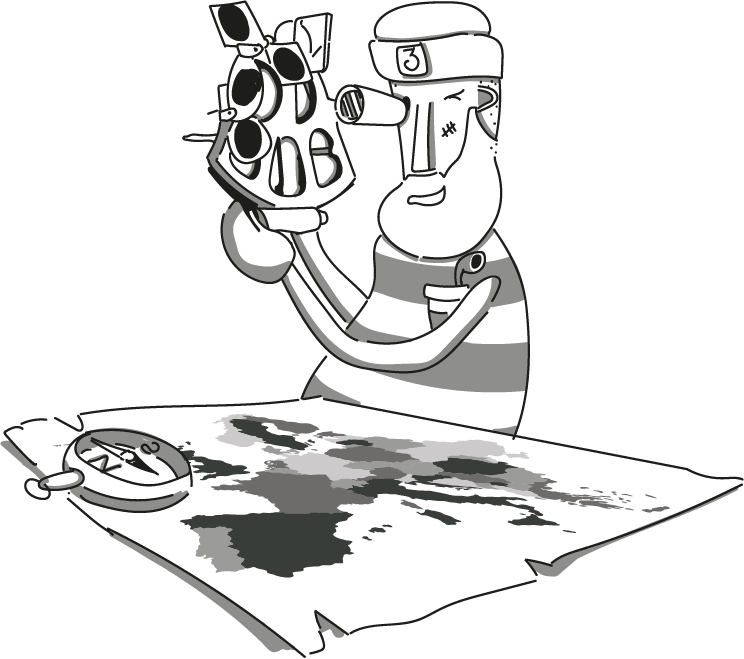
Boss without a boss role
A boss without a boss role:
Living up to responsibility, maintaining trust

Being the boss and yet not being one. No title. No announcements. No controlling gaze over the desk. Just the responsibility that remains—no matter how much we work on an equal footing.
For me, New Work means not less responsibility, but a different way of dealing with it. No power games. No hierarchies that delegate decisions. Instead, trust. Genuine closeness. And the courage not to always intervene.

Trust, even when it’s hard
Every day, I assume that everyone here is doing their best. Not because I check up on them, but because I know that these people WANT to work here and always give their best.
I don’t work with employees, but with colleagues. It’s not just a question of language, but of attitude. I want to work on an equal footing as often as possible. Nevertheless, there are moments when decisions are made differently than I would have done. When I think, “I could solve that faster/differently/better.” When my gut screams, “Intervene!”
That’s when leadership begins. Endure. Leave space. Allow growth. Only those who make their own decisions – and make their own mistakes – truly grow.
And sometimes that’s difficult. Especially when I realize: I would have done that completely differently. Then a comment slips out. Or I’m too quick with my assessment. It happens. But I learn, again and again.
For me, trust is an advance payment. I believe that people are here because they want to be and that they give their best. And that’s exactly what I don’t want to do: destroy that through control.
“Trust doesn’t mean looking away. Trust means giving space, even if it’s sometimes difficult.”
When responsibility becomes inconvenient

New Work thrives on self-organization. But not everything can be solved democratically. Some decisions have to be made. Some responsibilities cannot be shared.
Terminations, for example. Or decisions that are uncomfortable but necessary.
Then I am not a colleague. Then I am the one who bears the responsibility. And honestly, that often doesn’t feel good. I think I sometimes suffer more than the person who has been dismissed. Because I have a human being in front of me. And because I think: I don’t really want to deliver this news to this person. But it’s part of the job.
And yes, sometimes I feel the urge to scold them. That’s difficult for me. Because I actually assume that everyone can make their own decisions. And yet sometimes I feel: Now I have to say something. Even if it’s not my style. Even if it catapults me out of my role as a colleague.
But I don’t see that as a contradiction. We all have specific tasks here. Jessie does the accounting. Others write blog posts. I take care of the team structure, customer excellence, and market trends.
That’s my job.

Creating closeness where distance prevails
When you work remotely, you don’t just happen to notice conflicts. You have to look closely. You have to create spaces where people can show themselves.
Our check-ins with mood indicators are designed for just that. No small talk. No mandatory agenda. Just a brief moment to see: Who is where today? Who might need more space today?
We use cards with weather symbols, tornadoes, rumbling stomachs, sunshine. No explanation required. But with a clear signal: Attention, today might not be the right day for me to discuss business matters.
And sometimes interest is not enough. Sometimes moderation is needed. Coaching. Mediation. Not because someone has failed, but because growth begins exactly where it hurts.
Our workations also help: when we work in one place for five days in a row, closeness happens. It becomes clear what we miss when we are only remote, but also what we don’t miss. These days show that closeness is possible. And valuable.
Structure that allows freedom
To prevent remote working from ending in chaos, structure is needed.
Clear rules. Clear processes. Not as a restriction, but as a foundation on which freedom becomes possible.
Where we communicate. How we share decisions. What is documented where. That’s not control. That’s clarity.
Our regular meetings, our BDev days, our communication rules—all of this is structure, and it helps ensure that not everyone has to wonder, “How should I best address this?” or “Where does this actually belong?”


What leadership means to me today
The future belongs to small, fast teams. Teams that trust each other and mean business. Teams that don’t sweep conflicts under the rug. Teams that are capable of doing their best work without constant supervision.
“Those who only do what they can will always remain exactly where they are.”
I don’t want to stand still. I want to grow. And I want to create an environment where others can do the same, with everything that goes with it: trust, decisions, friction, closeness.
Leadership is no longer a title. Leadership is an attitude.